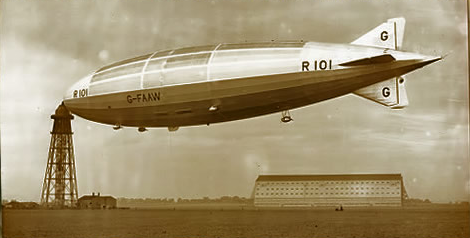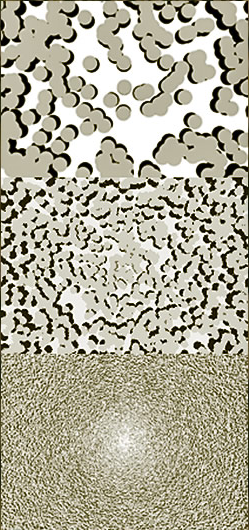OPOD - Antisolar glows
OPOD - Antisolar Glows: Exploring the Phenomenon
Have you ever witnessed a peculiar glow in crops that seems to defy explanation? In this article, we delve into the fascinating world of antisolar glows, a phenomenon that captivates the imagination of sky gazers worldwide. Join us as we unravel the science behind this optical marvel and shed light on the factors that contribute to its mesmerizing display.
Understanding Antisolar Glows
Antisolar glows, also known as opposition effect glows, are captivating atmospheric optical phenomena that occur directly opposite the position of the sun. Unlike the familiar solar glows that accompany sunrise and sunset, antisolar glows manifest as bright streaks or elongated glows in crops or other objects. These glows can be attributed to two main factors: the opposition effect and shadow hiding.
The Dominance of the Opposition Effect
While both the opposition effect and shadow hiding can contribute to antisolar glows, it is often the opposition effect that takes center stage. This effect becomes apparent when the glow appears elongated along the direction of crop stems, with clear evidence of shadow hiding in the background. At the antisolar point (ASP), shadows become invisible because they are directly behind the leaves casting them. As we move our eyes away from the ASP, the shadows gradually become more visible on the side of the object facing the ASP. This interplay between shadows and light gives rise to the progressively brighter appearance of the glow.
Unraveling Shadow Hiding and its Role
Shadow hiding plays a significant role in creating the unique visual characteristics of antisolar glows. As we observe objects from a vantage point away from the ASP, shadows cast by leaves or other elements become more visible. In the captivating image captured by Kevin Earp, the dearth of shadows near the ASP contributes to its enhanced brightness. This effect is particularly pronounced when the shadow hiders, such as crop stems, are elongated. The elongation stretches the opposition effect glow into a bright streak, adding to the allure of the scene.
The Enigmatic Heiligenschein
While the opposition effect is the primary driver of antisolar glows, other factors can contribute to their mesmerizing appearance. In some instances, the brightness of leaves in the glow may be attributed to a phenomenon known as the heiligenschein. Morning dew on the leaves can act as a lens, focusing light backward and creating a halo-like effect. Although it is uncertain whether this effect played a role in Kevin Earp's captivating photograph, it highlights the complexity and interplay of various optical phenomena in creating these stunning displays.
Exploring Antisolar Glows Further
To delve deeper into the world of antisolar glows and explore additional examples and explanations, visit the original article on our website. Please note that this article has been automatically converted from our old site and may not appear as intended. However, it provides a wealth of information and visuals to further your understanding of this captivating atmospheric optics phenomenon.
Conclusion
Antisolar glows continue to captivate sky gazers with their mesmerizing displays of elongated glows and streaks in crops and other objects. Understanding the opposition effect and shadow hiding helps shed light on the science behind these phenomena. While the opposition effect is often dominant, shadow hiding adds depth and complexity to the visual spectacle. The enigmatic heiligenschein, possibly influenced by morning dew, further enhances the allure of antisolar glows. By delving into these intricate optical phenomena, we gain a deeper appreciation for the beauty and complexity of our atmosphere.

Anti-solar Glows ~ Kevin Earp captured this scene at 5am on May 12, '11 at Willington, Bedfordshire, UK. A bright glow suffuses the crops around his shadow. One of the huge buildings in the distance is the Cardington hangar which housed the innovative and successful R100 airship and the ill-fated R101. ©Kevin Earp, shown with permission.

A glow in crops directly opposite the sun might be a heiligenschein caused by dew drops or an ‘opposition effect’ glow caused by shadow hiding.
Both can contribute. However, here it is the opposition effect that is probably dominant.
Why? The glow is elongated along the direction of the crop stems and shadow hiding is clearly evident in the large background image.
At the antisolar point, ASP, shadows are invisible because they are directly behind the leaf casting them. Move the eye away from the ASP and the shadows become increasingly visible on the side of the object towards the ASP. These progressively more visible shadows are evident around the shadow of Kevin’s head. The dearth of shadow near the ASP makes it appear brighter.
The opposition effect glow is stretched into a bright streak when the shadow hiders are elongated, as here.
Some of the leaves are very bright. There ‘might’ be a contribution from morning dew focussing light backwards to form a heiligenschein.


Note: this article has been automatically converted from the old site and may not appear as intended. You can find the original article here.
Reference Atmospheric Optics
If you use any of the definitions, information, or data presented on Atmospheric Optics, please copy the link or reference below to properly credit us as the reference source. Thank you!
-
<a href="https://atoptics.co.uk/blog/opod-antisolar-glows/">OPOD - Antisolar glows</a>
-
"OPOD - Antisolar glows". Atmospheric Optics. Accessed on April 19, 2024. https://atoptics.co.uk/blog/opod-antisolar-glows/.
-
"OPOD - Antisolar glows". Atmospheric Optics, https://atoptics.co.uk/blog/opod-antisolar-glows/. Accessed 19 April, 2024
-
OPOD - Antisolar glows. Atmospheric Optics. Retrieved from https://atoptics.co.uk/blog/opod-antisolar-glows/.